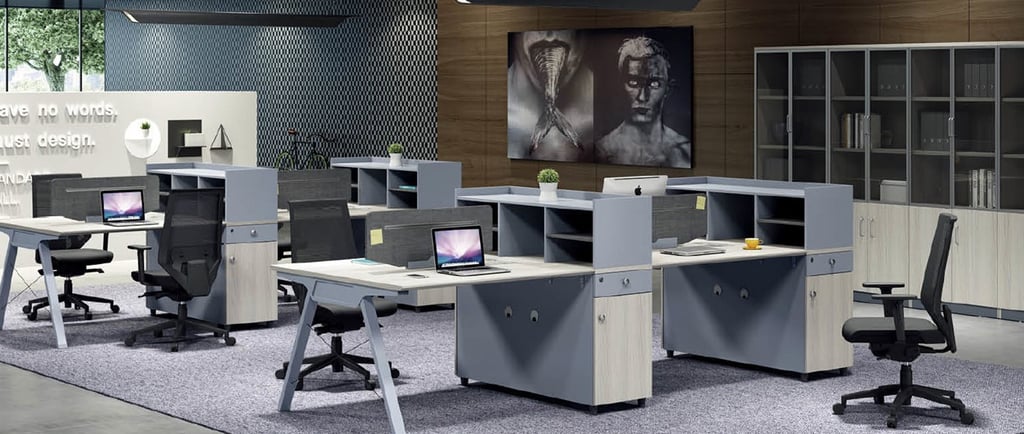Ergonomics and Mental Health
Ergonomics and Mental Health—Ergonomic office design Enhances mental health and productivity. From adjustable desks and chairs to biophilic design and optimal lighting, create a workspace that reduces stress, improves focus, and boosts well-being.
sensit.pro editorial team
12/31/20244 min read


"Ergonomics and Mental Health: Designing Workspaces That Foster Well-being"
The Problem: Physical Discomfort Fuels Mental Stress
When employees spend hours in uncomfortable chairs or working at ill-positioned desks, it creates a ripple effect. Physical pain, such as backaches, neck strain, or carpal tunnel syndrome, often leads to decreased productivity and increased stress. Over time, this stress can escalate into burnout, anxiety, or depression. According to the Harvard Business Review article "How to Manage Stress and Boost Productivity with Ergonomic Workspaces", physical discomfort in the workplace is one of the top contributors to job dissatisfaction and disengagement.
The lack of privacy and constant distractions in open-plan offices exacerbate these issues. Employees frequently report feeling "on edge" when exposed to high foot traffic behind their workstations, which can lead to reduced focus and heightened anxiety. Studies from the University of Sydney, such as "The Impact of the 'Open Plan' Workspace on Employee Outcomes", reveal that open office plans, while designed for collaboration, often result in a 15% decrease in perceived workplace satisfaction due to noise and a lack of personal space.
The Role of Lighting and Visual Ergonomics
Lighting is another critical yet often overlooked factor in workplace design. Poor lighting can lead to eye strain, headaches, and fatigue, all contributing to mental stress. According to the Illuminating Engineering Society, workplaces with inadequate or harsh lighting experience higher employee discomfort and lower productivity.
Solutions include:
Adjustable Lighting Systems: Allowing employees to control the intensity and direction of light ensures comfort for various tasks.
Source: Illuminating Engineering Society, "Lighting Design Standards for Well-being."
Natural Light Integration: Studies from Cornell University reveal that employees exposed to natural light report an 84% reduction in symptoms like eyestrain and blurred vision.
Source: Cornell University, "The Impact of Natural Light on Workplace Productivity."
Anti-reflective Screens and Monitors reduce glare and minimize the risk of digital eye strain, a common issue in modern offices.
Source: Occupational Safety and Health Administration (OSHA), "Ergonomics and Screen Time in the Workplace."
These lighting solutions enhance physical well-being and create a more positive and energizing work environment.
Biophilic Design: Bringing Nature Indoors
Biophilic design, which integrates natural elements into office spaces, has significantly boosted mental health and productivity. Research published in the Journal of Environmental Psychology found that exposure to natural elements, such as greenery and natural materials, reduces stress and enhances cognitive function.
Key biophilic solutions include:
Indoor Plants: Adding greenery to the workplace improves air quality and creates a calming atmosphere. According to a study by Human Spaces, employees in biophilic offices report a 15% increase in well-being and creativity.
Source: Human Spaces Report, "Biophilic Design in the Workplace."
Natural Materials: Incorporating wood, stone, or water features fosters a connection to nature, which has a soothing effect on the mind.
Source: Journal of Environmental Psychology, "Natural Elements in Office Design and Mental Health."
Nature Views or Art: Placing desks near windows or using artwork depicting natural scenes can evoke a sense of tranquillity.
Source: Environmental Health Perspectives, "The Role of Visual Nature in Stress Reduction."
Biophilic design supports mental health and encourages engagement and retention by creating a more appealing workspace.
The Solution: Ergonomic Furniture as a Mental Health Ally
Ergonomic office furniture addresses these issues by creating a workspace that aligns with the human body's natural movements. Key solutions include:
Adjustable Desks: Standing desks or sit-stand options help combat the risks of prolonged sitting. Alternating between sitting and standing regularly reduces physical strain and boosts energy levels.
Source: Mayo Clinic, "Health Benefits of Sit-Stand Desks."
Ergonomic Chairs: Chairs with lumbar support, adjustable height, and armrests promote proper posture. Research published in the Journal of Occupational Health Psychology found that employees using ergonomic chairs reported a 17% improvement in focus and reduced back pain.
Source: Journal of Occupational Health Psychology, "Ergonomic Seating and Workplace Outcomes."
Monitor Arms and Keyboard Trays position screens and keyboards at eye level, minimizing neck strain and wrist discomfort.
Source: Occupational Health & Safety Magazine, "Ergonomic Accessories for the Modern Workplace."
Beyond the Physical: The Psychological Impact of Comfort
Ergonomics does more than alleviate physical pain; it fosters a sense of care and value. When employees feel supported by their work environment, they reduce stress and improve overall job satisfaction. Studies from the American Psychological Association reveal that employees working in ergonomic environments are 25% less likely to experience workplace-related anxiety.
Source: American Psychological Association, "The Role of Ergonomics in Employee Mental Health."
Moreover, physical comfort promotes productivity. A Human Factors and Ergonomics Society survey found that companies investing in ergonomic solutions experienced a 20% increase in employee efficiency.
Source: Human Factors and Ergonomics Society, "Efficiency Gains from Ergonomic Investments."
Addressing privacy concerns is equally crucial. Creating modular workstations with noise-cancelling partitions, offering quiet zones, or installing phone pods can significantly improve mental focus. Phone pods provide a private, soundproof space for employees to take calls or focus on tasks without distraction, which is especially beneficial in open-plan offices. Employees with control over their environment report higher satisfaction and reduced workplace stress.
Source: International Journal of Workplace Health Management, "Privacy Solutions in Open-Plan Offices."
Implementation Challenges and ROI
Transitioning to ergonomic furniture may seem expensive, but the long-term benefits outweigh the costs. Reduced absenteeism, fewer workplace injuries, and increased retention are quantifiable outcomes. According to OSHA, businesses save approximately $17 in reduced healthcare costs and improved productivity for every dollar spent on ergonomic solutions.
Source: Occupational Safety and Health Administration (OSHA), "Cost Savings of Ergonomic Investments."
To implement effectively:
Conduct workplace assessments to identify ergonomic risks.
Involve employees in choosing ergonomic solutions to ensure adoption.
Provide training on proper posture, lighting adjustments, and equipment use.
Incorporate biophilic elements to enhance the overall environment.
Conclusion: Turning Stress into Success
Investing in ergonomic office furniture is not just a physical upgrade; it’s a mental health strategy. Businesses can create environments where employees feel valued and empowered by addressing the root causes of workplace discomfort, including lighting, privacy, visual ergonomics, and biophilic design. A well-designed ergonomic workspace transforms stress into success, benefiting individuals and organizations.




